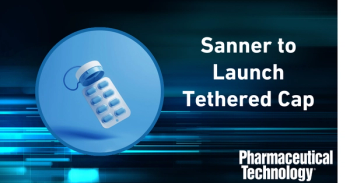
Pharmaceutical Technology Europe
- Pharmaceutical Technology Europe-08-01-2014
- Volume 26
- Issue 8
Past, Present and Future of Softgel Technologies
Softgels are now being recognised as one of the preferred dosage forms for the treatment of pain, eye conditions, cough and cold, as well as allergy.
Softgels on the Horizon
Softgel technologies offer an alternative drug-delivery vehicle for lead candidates that are difficult to formulate.
The origin of the current softgel manufacturing process, the rotary die principle, dates back to a 1932 patent. The manufacturing principle has not changed significantly over the decades but the technology certainly has evolved. Initially applied in low-end consumer sectors for cosmetics, nutritional products and even bath pearls and paint balls, the trends in using softgels for prescription and consumer healthcare markets have generated major shifts in demand.
Pharmaceutical Technology Europe
The era of high throughput screening has led to an expanded range of molecules with chemical structures leading to poor bioavailability and high toxicity, giving rise to significant formulation challenges. This problem has led to various commercial products formulated in softgels to overcome bioavailability challenges (e.g., amprenavir) and manage low dose and toxicity (e.g., dutasteride).
Softgels are now being recognised as one of the preferred dosage forms for the treatment of pain, eye conditions, cough and cold, as well as allergy. The easy-to-administer appeal and potential for quicker onset of action make softgels a popular dosage form (e.g., ibuprofen softgels). Despite its popularity, it is still regarded as niche technology in an industry dominated by tablet formulations, partly because in pharmaceutical sciences education, there is more focus on the traditional technologies such as tablets, cream, ointments and powder sachets. Also many companies have little internal experience with the softgel technologies and need to contract third parties for both development and manufacturing.
This situation opens up opportunities as large and mid-sized pharmaceutical companies rationalise R&D and rely more on outsourcing. The use of contractors, where much of the knowledge of softgel technologies resides, provides pharmaceutical companies the opportunity to capitalise on market trends, such as switching from prescription to over-the-counter products or developing patient-centred formulations. In addition, CDMOs are innovating softgel technologies, which include enteric-release (Entericare) and chewable (Chewels) softgel technologies. The future prospects of softgel technologies are looking bright.
About the Author
Kaspar van den Dries, PhD, is senior director formulation sciences, solid dosage forms and softgels at Patheon.
Articles in this issue
over 11 years ago
Serialisation, Aggregation and Authenticationover 11 years ago
Single-Use Systems: Enabling the Future of Biologics Manufacturingover 11 years ago
Protecting Drug Safetyover 11 years ago
Trends in Single-Use Biomanufacturingover 11 years ago
Polymers for Solubility Enhancementover 11 years ago
Innovations and Future Trends in HPLC Column Technologyover 11 years ago
Advances in Film Coatingover 11 years ago
Biosimilar Development: 10 Years Onover 11 years ago
Supply-Chain Security of Pharmaceutical Starting MaterialsNewsletter
Get the essential updates shaping the future of pharma manufacturing and compliance—subscribe today to Pharmaceutical Technology and never miss a breakthrough.




